The list of the best beginner drones is constantly growing with more and more models hitting the shelves to provide an impressive range of options. Whether you’re looking for a top-end beginner camera drone or a complete kit to get started in the exciting world of FPV, we have the perfect drone for you here.
The term beginner model may suggest basic features and functionality, but it’s safe to say that some beginner models are highly competent performers that can be used professionally. While others, really are just a step above toy drones, but these are the most accessible in terms of cost.
When looking at beginner drones, consider those that come in kits or have a Fly More Bundle that can be purchased separately. Kits often include a carry case, additional batteries and useful accessories, so you get everything you need to get started in a convenient package.
Many of the drones we cover here have been featured in individual reviews on the website, so make sure you check out their full reviews. Plus, some have been featured in the best drones buyer’s guide, which goes to show just how highly we rate them despite their ‘beginner’ moniker. You may notice that some of the ratings in this guide are different to those in standalone reviews, but this is simply to reflect their performance within a beginner drone context.
Do always remember to check out the drone regulations in your area before taking off. And have a look through our round-up of drone deals to make sure you’re getting the best price.
Best professional drone
The DJI Mavic Air 2 is a small and lightweight model that’s larger than the Mavic Mini 2 and Fimi X8 Mini but packed with many more flight, camera and safety features. The Mavic Air 2 features a folding design and a weight of 570g making it highly portable. What’s more, with advertised flight times of up to 34 minutes and a top speed of 42mph in Sport mode, it’s a highly capable drone in terms of performance.
With a 1/2-inch 12MP sensor, the Air 2 can capture photos in both Raw and JPEG format, as well as video at up to 4K at 60fps. And The Air 2 can capture video in the D-Cinelike profile for colour grading in a professional workflow as well as the Standard profile that’s suitable for the majority of users. For photos, there are multiple shooting features including high-resolution 48MP stills that are saved as JPEGs.
When it comes to safety features, the Mavic Air 2 provides front and rear obstacle sensors alongside sensors on the bottom of the airframe. And to aid with collision avoidance, the Advanced Pilot Assistance System (APAS) 3.0 can be set up to fly the Air 2 around objects when detected or to brake. Plus, there’s GPS positioning to hold the drone in position while it’s hovering so it doesn’t drift in wind and to provide Return to Home functionality.
Best portable drone
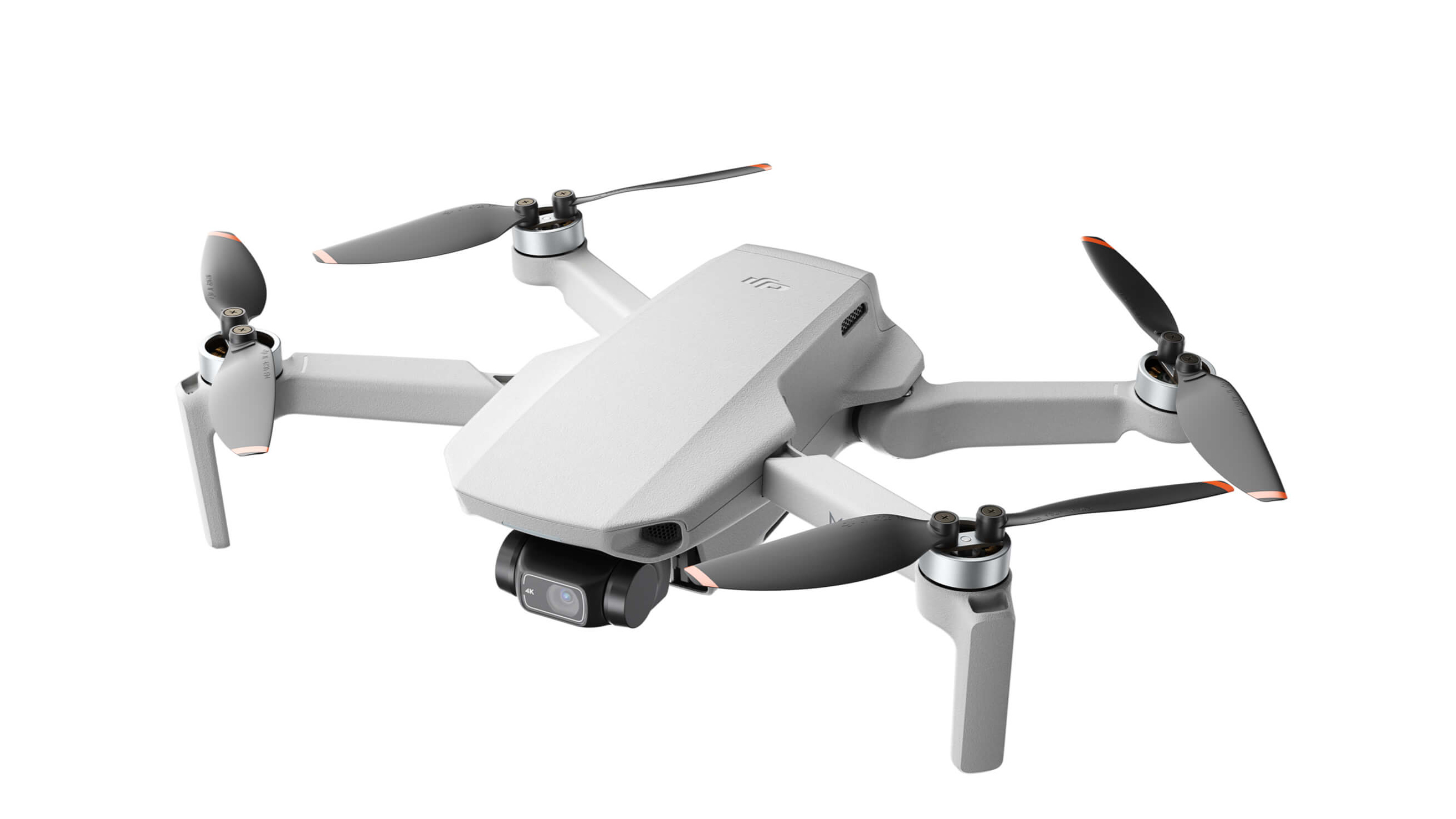
The DJI Mini 2 is incredibly small and lightweight, making it less daunting for beginners than larger, more powerful and more expensive DJI models. The advantage of this drone is that you can enjoy the excellent build and image quality that DJI is well-known for in a drone that weighs just 249g. This means that you can fly it without having to register with the FAA (US) and CAA (UK).
Featuring a folding design that makes the Mavic Mini 2 highly portable, it’s certainly no slouch when it comes to photography and video thanks to a 1/2.3-inch 12MP sensor that can capture photos in both Raw and JPEG format, as well as video up to 4K. A digital zoom provides up to 4x magnification when shooting FHD video, 3x at 2.7K and 2x at 4K.
While collision avoidance is absent in this entry-level model, the Mini 2 remains incredibly easy to fly and performs exceptionally well compared to other beginner models. And to aid with flying and capturing photos and videos, the drone uses GPS positioning to hold it in position while hovering. Return to Home functionality allows you to land the drone at the take-off location at the touch of a button.
Most intuitive to control
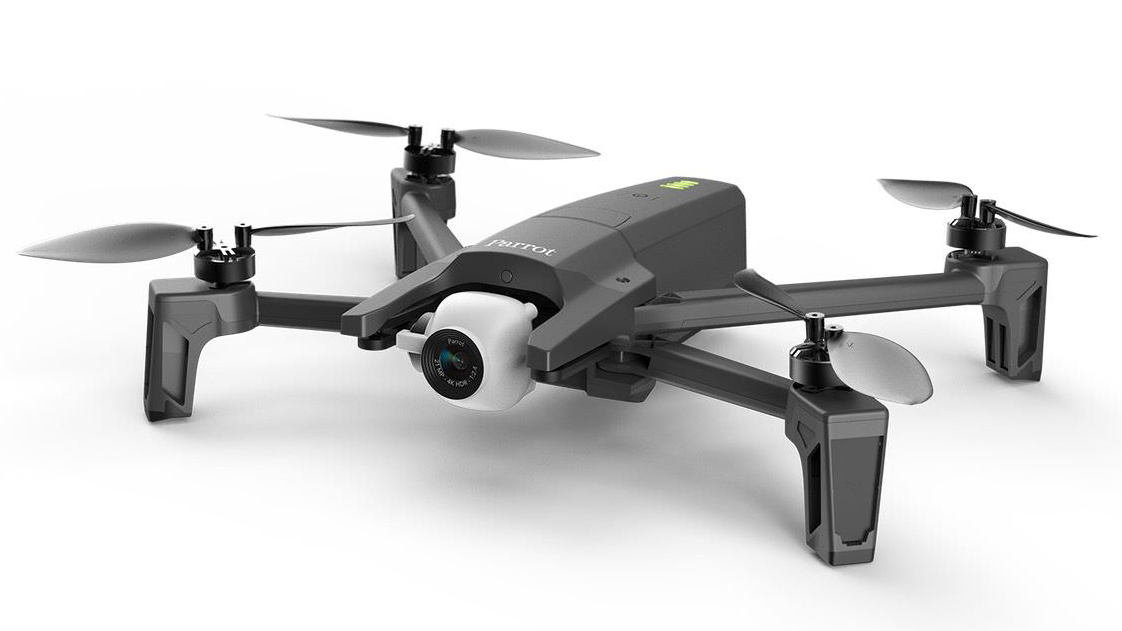
With the Parrot Anafi you get a drone that’s easy enough to use for beginners, but also offers the features and functionality you’ll naturally desire as your skills and confidence grow. So, while it’s not the cheapest beginner drone available, it’s certainly one of several models that could provide greater longevity. Small and lightweight, the Anafi features a folding design and weighs just 320g so it would require pilot registration with the FAA (US) and CAA (UK).
Like most high-quality drones, the Anafi features automated flight patterns to make it easy to capture professional-looking videos without the need to know how to perform complicated manual flying manoeuvres. Many of these use GPS positioning, but with no collision avoidance available you’ll need to take care when flying the drone because you can’t rely on an automated system to avoid crashes.
The camera is capable of shooting high-quality photos and videos thanks to the 21MP sensor and the ability to shoot video at up to 4K. There’s a digital zoom up to a 2.8x that’s claimed to be lossless, alongside a standard digital zoom up to 3x. Video frame rates are more limited than DJI drones but you get all the settings you need, plus it’s much more fully-featured in this area than the cheaper beginner drones that are more suitable for simply learning how to fly.
Best FPV drone
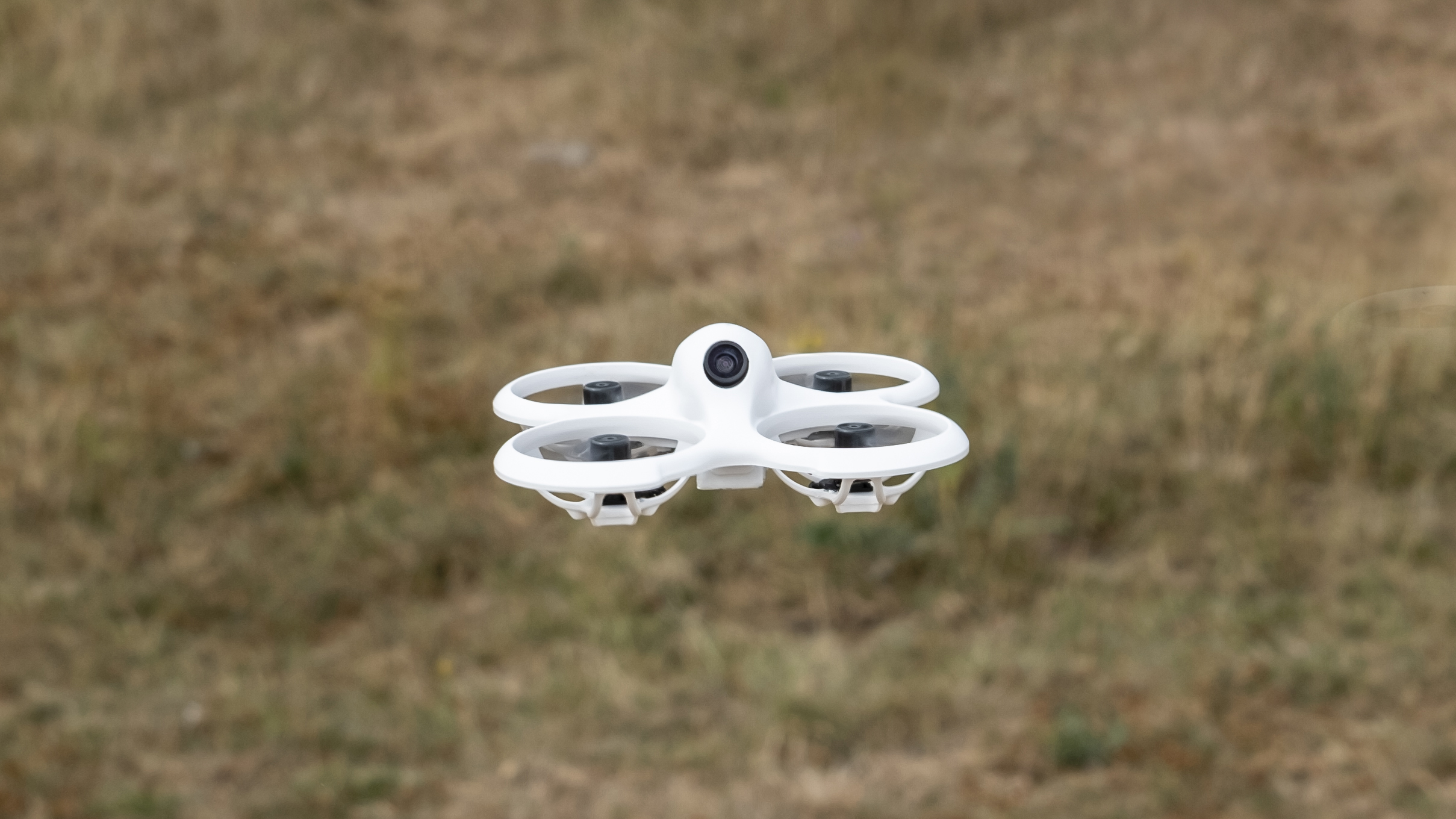
FPV (first person view) drones are well-known for allowing pilots to capture the most impressive video footage possible. But they’re unfortunately difficult to learn how to fly in Manual/Acro mode, which is the mode that allows you to roll, flip and dive the drone to capture that immersive video.
The Cetus Pro kit is a complete beginner’s FPV kit and includes everything you need to start learning how to fly FPV for just $226 / £190. This includes the Cetus Pro Brushless Quadcopter, a LiteRadio 2SE Transmitter, VR02 FPV Goggles, two batteries, a USB battery charger and cable, four spare propellers, a propeller removal tool, a USB-C cable and a carry case. Spare parts are also available if you have a serious crash.
The Cetus Pro Brushless Quadcopter uses powerful brushless motors to power the four propellers, which are protected by propellor guards to protect them during inevitable frequent crashes. And at just 117×117×35mm and 45.8g with the battery included, this palm-sized drone is small enough to fly indoors or outdoors. And with three flight modes including Acro, and three speed modes, you can start slowly and build up the modes as your skills increase.
The camera on the Cetus is used purely to provide a live feed to the analogue goggles so you can enjoy an FPV view. The Cetus and the VR02 FPV Goggles do not, however, have the capability to record video so this drone is purely a learning tool. The only additional accessories you might need to get started are an additional four battery set that cost $26 / £21, and a battery charger for six batteries that costs $20 / £16.
Best FPV drone for video
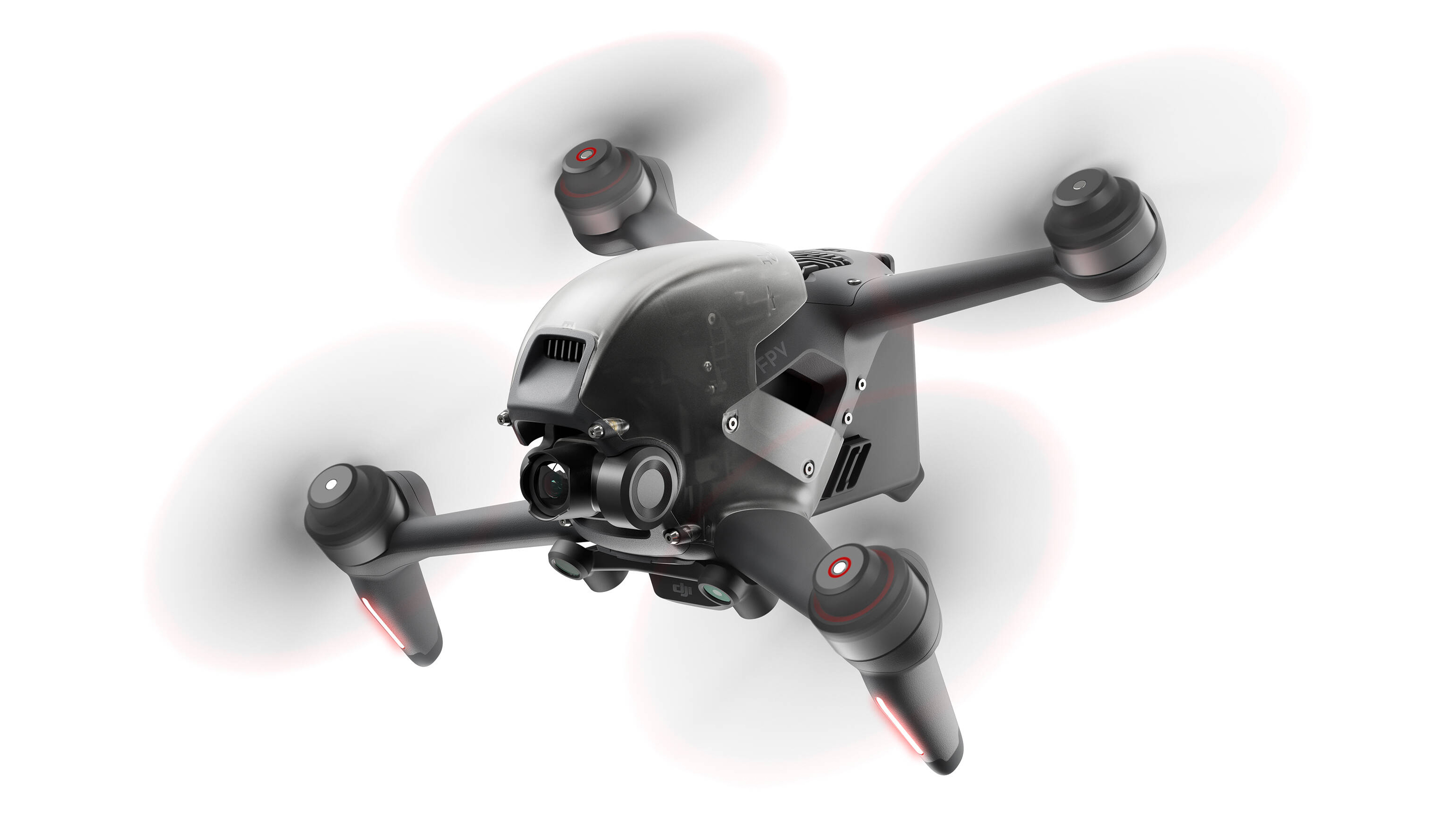
Including the DJI FPV in a beginner’s drone guide may seem a little odd because in some ways it’s quite an advanced model. But in reality, this drone is the perfect introduction to notoriously difficult to fly FPV drones thanks to DJI’s expertise in creating easy to fly drones, which has undoubtedly trickled down to this model.
The DJI FPV is a first-person view drone providing an immersive flying experience, and video, where you use goggles to view the camera view as you fly. With the DJI FPV, you can fly the drone out of the box and it’s much easier to use than traditional FPV drones thanks to easy to use and intuitive controls with a bullet-proof connection between the DJI Goggles V2 and the drone.
This drone can reach speeds of up to 60mph in Sport mode and up to 87mph in manual mode, although the latter is a difficult mode to use and is only for experienced FPV pilots.
Photo functionality is limited to JPEGs which aren’t great quality overall, although 4K video looks great and provides incredibly immersive footage. Safety features are limited but the DJI FPV uses GPS positioning in Normal Mode, and sensors alert you to potential collisions and slow the drone down but won’t stop it. All in all, a perfect introduction to FPV flying.
Best value portable drone
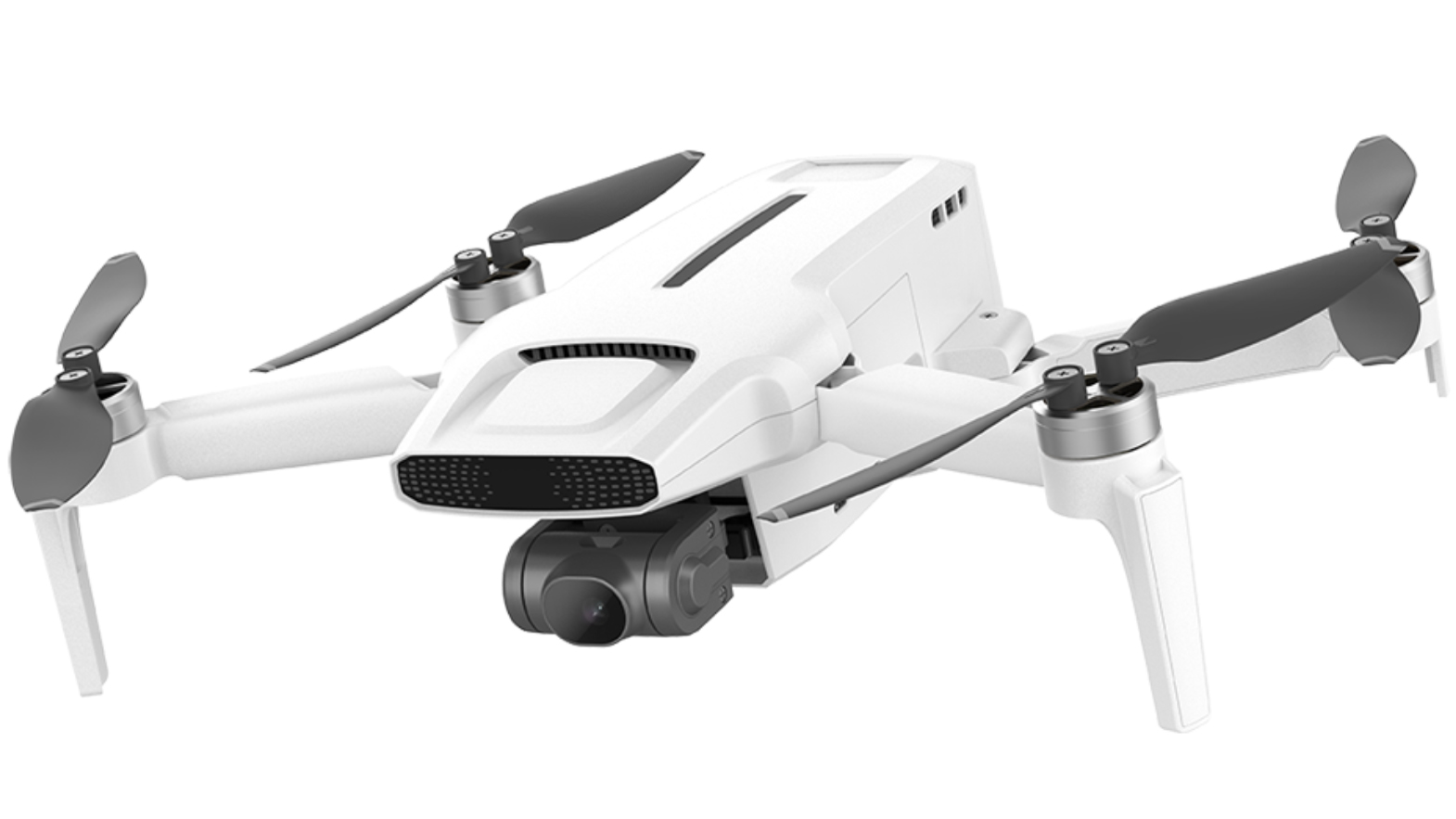
If you’re looking for a non-DJI drone that provides similar flight and camera features at a slightly lower cost, the Fimi X8 Mini is the closest you can get. This drone features a 1/2.6-inch 12MP sensor capable of capturing photos in Raw and JPEG, as well as video in 4K at up to 30fps. Video can also be captured in F-log for colour grading in professional workflows and the 3-axis gimbal helps to ensure smooth video footage.
The Fimi X8 Mini offers Smart Tracking Modes, time-lapse, flight path planning, panoramic photos and live streaming, so there are many of the features you’ll desire as your flying skills grow. GPS positioning is provided by GPS, Glonass and Beidou for holding position and initiating Return to Home, but there’s no collision avoidance available.
There are two battery options available for the Fimi X8 Mini; with the standard battery the drone weighs 258g and offers up to 30 minutes of flight time, while the drone weighs 245g with the pro battery and offers up to 31 minutes of flight time. The most important thing to consider here is that using the pro battery means you wouldn’t have to register with the FAA (US) or CAA (UK) to fly the drone, although if you opted for the standard battery you would need to.
Best for children
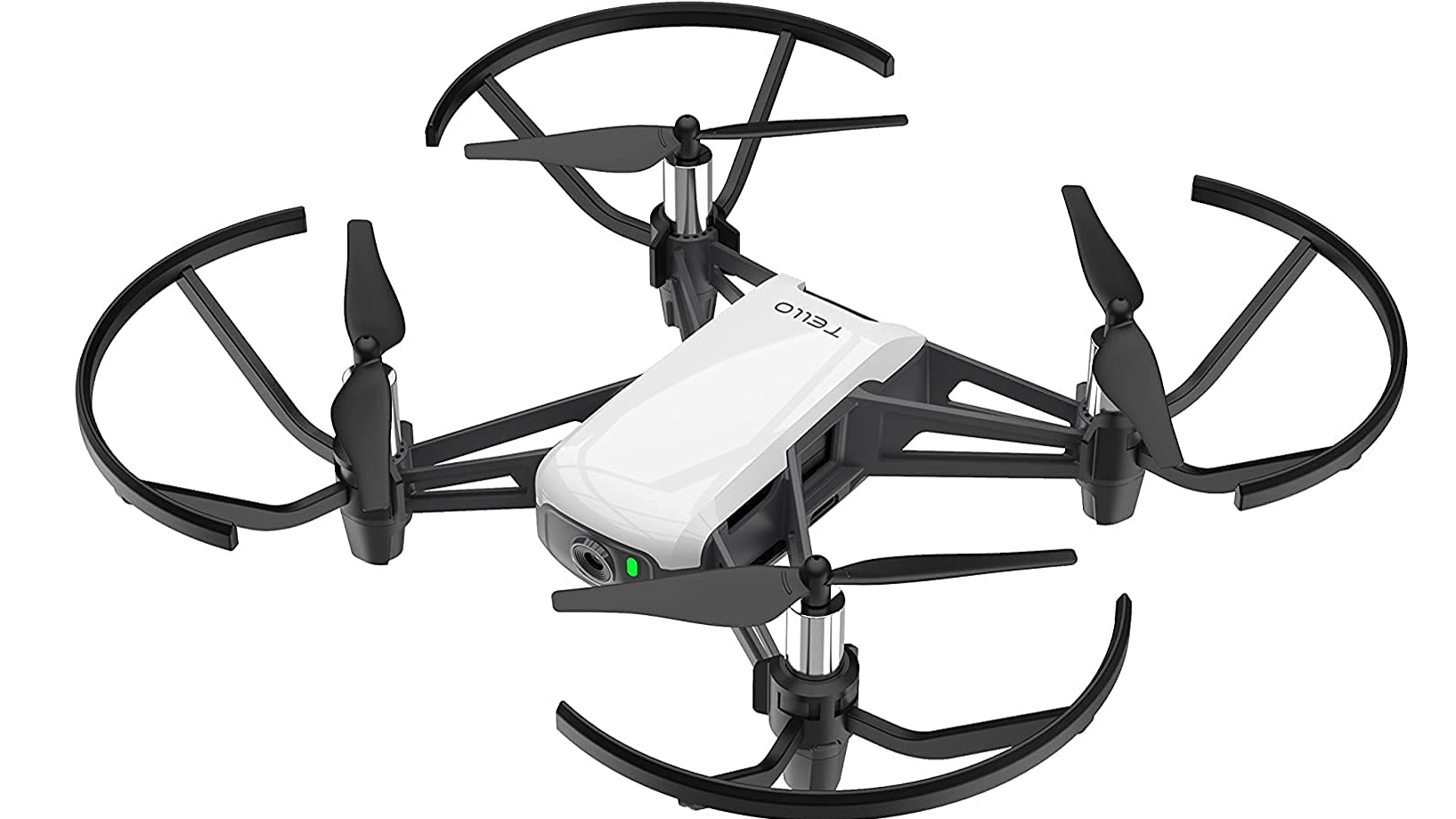
The Ryze Tello by DJI is essentially a toy drone aimed at children. But its low cost and small size also make it a perfect entry point for beginners wanting to familiarize themselves with basic drone controls before upgrading to a more expensive model. The small size combined with the low weight of 80g and included propeller guards make it a reasonably safe drone to fly indoors.
The Tello offers limited photo and video functionality with the 5MP camera producing JPEGs and 720p video, so it certainly isn’t designed for more demanding users. Flight distance is limited to 100m so you can’t fly too far away, and flight time is up to just 13 minutes. And in terms of control, the done is most commonly controlled using the on-screen controls in the smartphone app,
While the Tello won’t be winning you any awards for content creation, it’s certainly a lot of fun and is perfect for getting to grips with basic drone controls without breaking the bank. It can even be flipped in mid-air, take-off from the palm of your hand and be programmed using Scratch making it an educational and fun device for kids and adults alike. If you’d like more batteries to increase flight times, there’s a Boost Combo that includes three batteries and additional accessories.
Best for adult learners
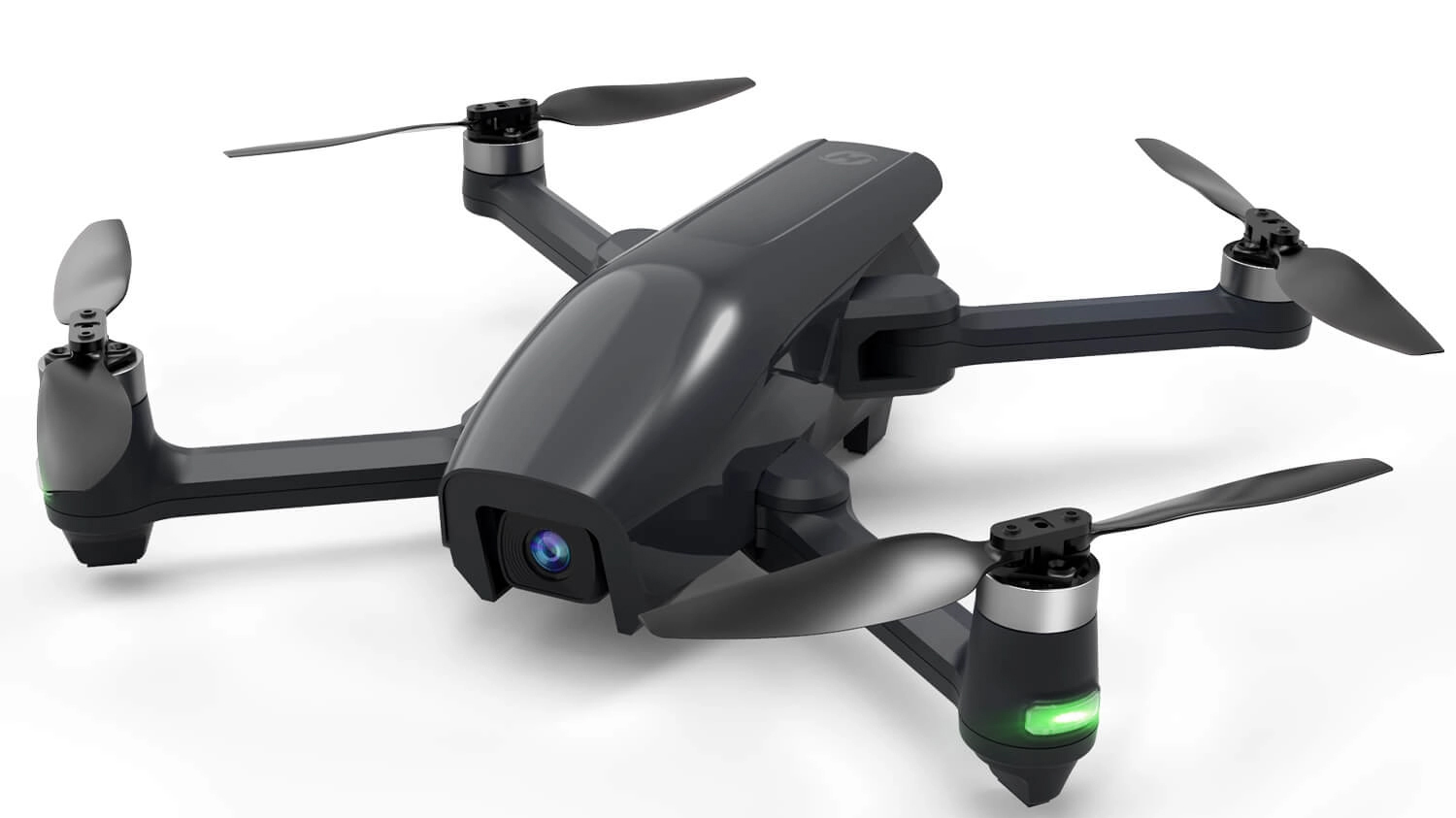
The Holy Stone HS710 Ultralight 4K GPS Drone is an interesting model that provides a mixture of basic and more advanced features and functionality at a low cost. As a result, it’s not a drone that you would use for shooting more advanced photos and videos, but it’s certainly a great option for learning how to fly drones without spending a huge amount of cash.
Camera functionality is basic despite the ability to shoot 4K video, but this is more than adequate at the beginning of your drone flying journey. However, as your skills and requirements increase, it’s unlikely that this drone would grow with you and an upgrade would become inevitable. That said, the low cost makes this a compelling option for first-time drone users.
The Holy Stone HS710 features GPS and GLONASS for positioning, and this brings into play features including Follow Me, Waypoint Flight, Point of Interest and Return to Home functionality which are typically seen in more expensive models. The GPS and Return to Home are the limit of safety features and although there’s an emergency stop button, this stops the motors so the drone will fall out of the sky rather than stopping to hover. There’s also Optical Flow Positioning to keep the drone hover stable but this is said to work best indoors with the drone less than 3m away, which isn’t an ideal flying scenario.
Best bundle
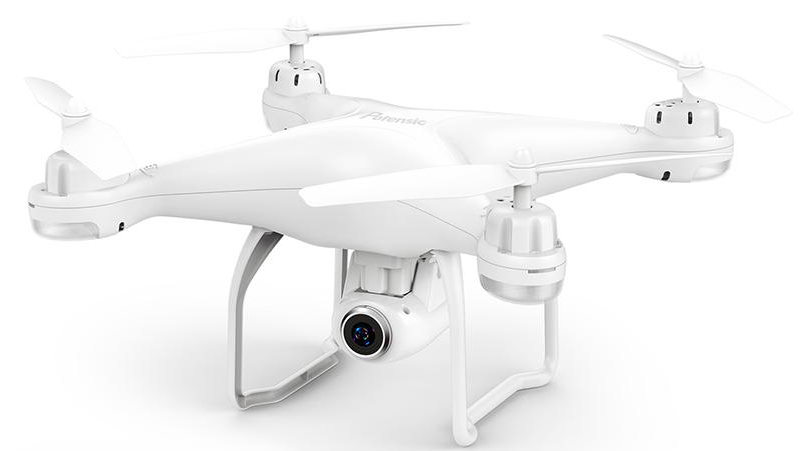
The Potensic T25 is a basic drone ideal for learning how to fly drones and how their controls work, but the limited camera quality and functionality mean that it’s certainly not a winning option when it comes to shooting photos and video. But when you consider the low price, it remains an inexpensive option for those looking to get started with flying drones.
Exact specifications are unavailable, but the Potensic T25 is small and weighs less than 250g with the manufacturer claiming it doesn’t need to be registered to fly. This would suggest it weighs 249g or less. In terms of design, the T25 follows the traditional drone design seen in the DJI Phantom series where the camera sits between two landing stands, and the drone doesn’t fold for transportation.
The Potensic T25 bundle comes with two or three 1000 mAh batteries offering up to 10 minutes of flight time each. And thanks to GPS positioning the drone will hover in position and you can enjoy features including subject tracking and Return to Home. Camera functionality is limited, and there’s no stabilization so videos aren’t smooth, but video can be captured at 2K. For the price, size, accessories and features, the T25 is a cost-effective option that would help you to get started.
Best budget option
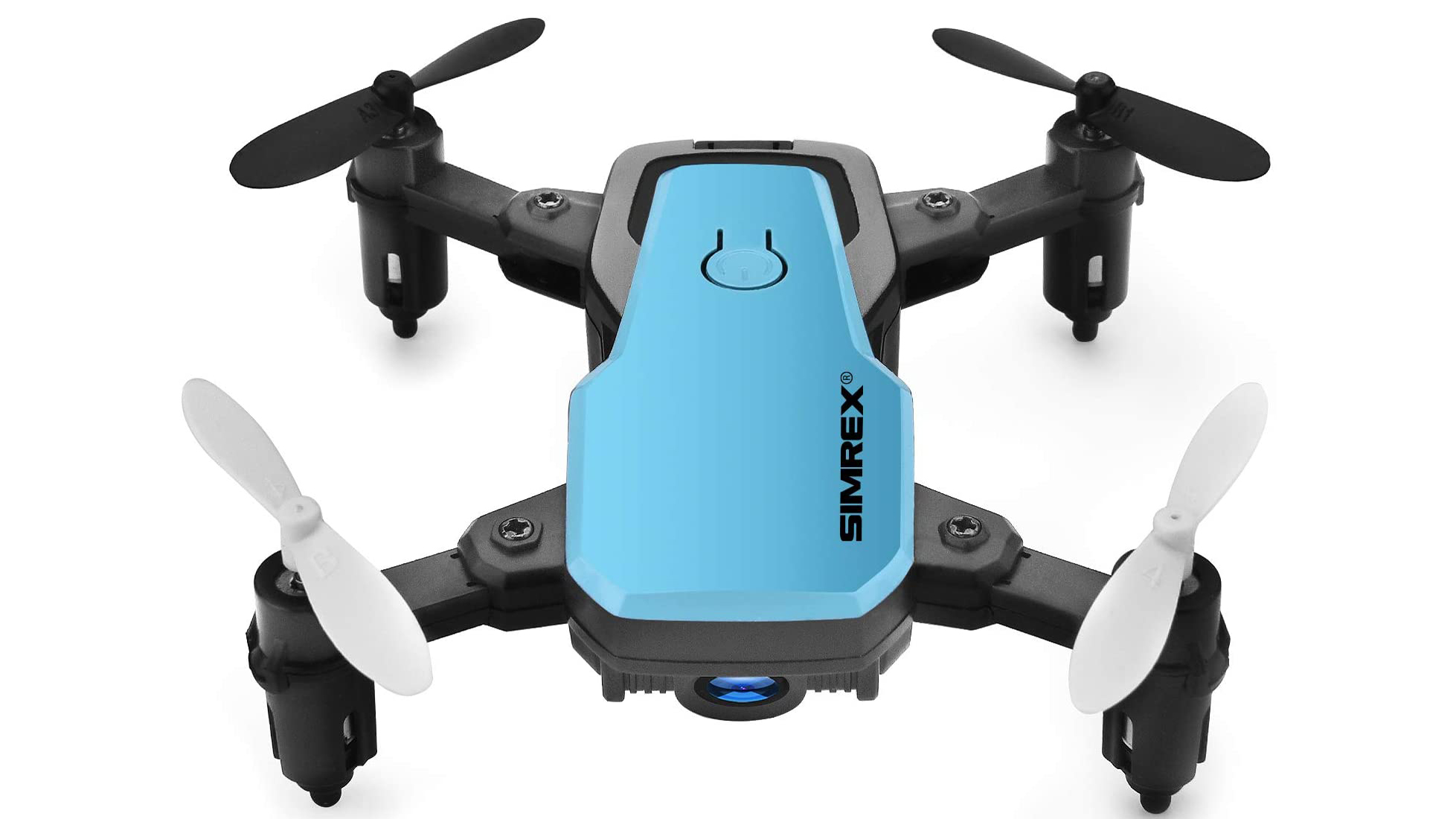
The Simrex X300C may essentially be a toy aimed at people 14 years and older, but it’s a fantastic option for getting to grips with drone flight controls and flying on a budget. This drone is seriously inexpensive, and its tiny size and low weight coupled with a range of just 30-45 metres mean that crashes are unlikely and even if you do, it’s not going to cause the financial headache you’d encounter with more expensive beginner drones.
Being such a small drone, it doesn’t need to be registered for flight with the FAA (US) or CAA (UK), so you can get up and flying as soon as the battery is charged and AA batteries have been fitted to the controller. The battery only takes around an hour to charge and provides 8-10 minutes of light time. But if you purchase additional batteries, the Simrex X300C needs to be rested for 10 minutes between flights to avoid overheating.
With no safety features such as GPS or collision avoidance available, except optional propeller guards, you’ll need to fly with care. There is however a stop button that will stop the drone if it looks like a crash is imminent. The camera is extremely basic offering only up to 720p video, but this drone is more about learning to fly and fun than creating high-quality photos and videos.
Best cheap 4K drone
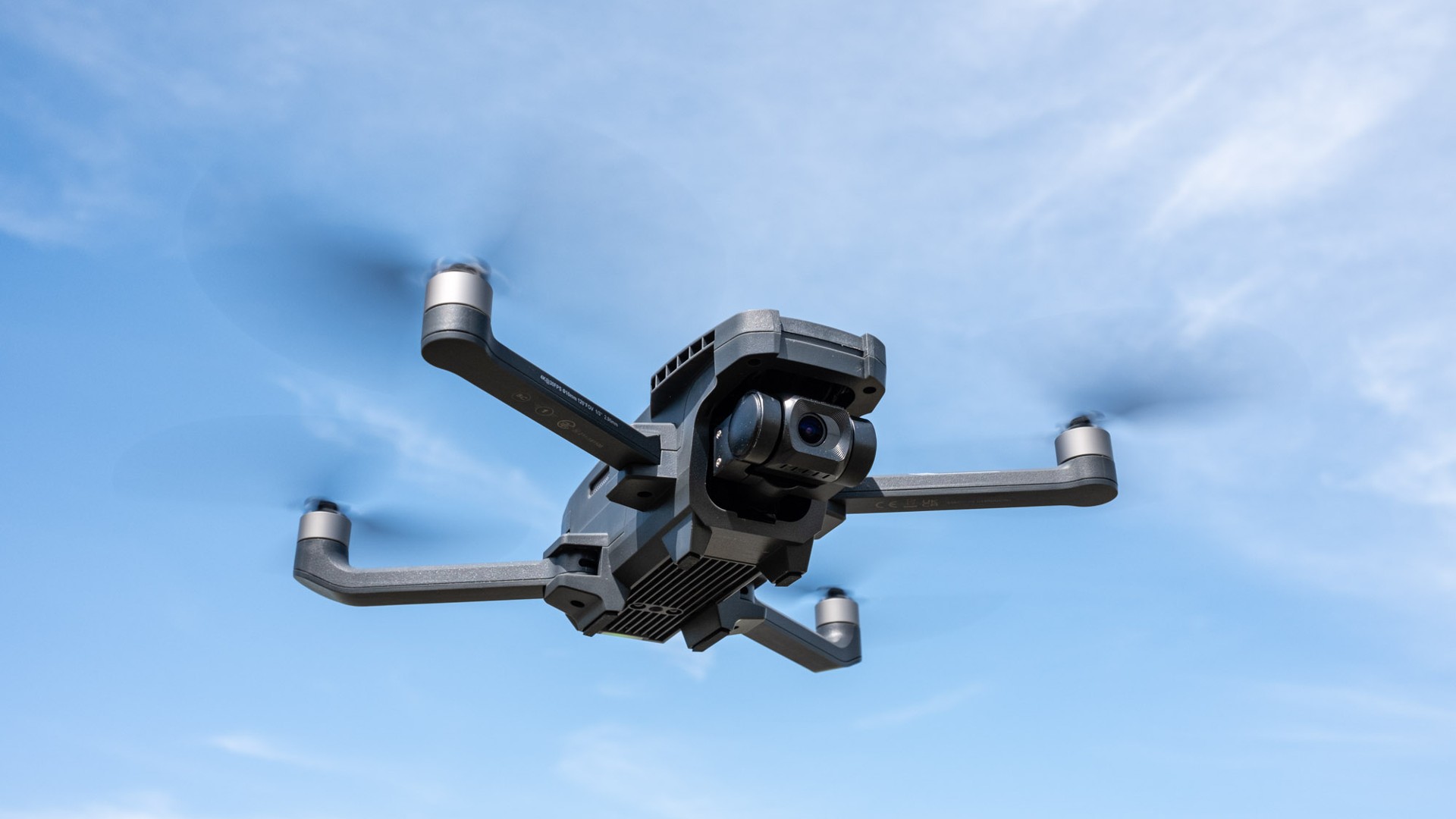
The very best drones, even beginner models, can be expensive. So if you’d prefer a budget model that you can use to get to grips with flight controls, the Holy Stone HS720G is a basic model that comes at a low price that won’t break the bank. Features are extremely basic and limited, but the HS720G does offer GPS positioning alongside flight modes including Point of Interest/Orbit, Follow Me and Tap Fly pre-plotted flight routes.
There are no collision avoidance sensors so you have to fly with care when close to obstacles, but the HS720G flies well overall and the controls are responsive and are identical to more advanced models. This means you can get used to controls and camera operation in tandem before inevitably upgrading to a more advanced model in the future.
Camera functionality is extremely basic with control over brightness, saturation, ISO and white balance. Photos can only be captured in JPEG format and these are in a 4K (3840x2160px) 16:9 ratio which will allow you to make up to 10x8in prints after cropping. Video can be captured in 4K at 30fps and FHD (1080P) at 60fps.
Holy Stone drones are sold in the UK and US exclusively through the Holy Stone store on Amazon so they’re easy to buy. The HS720G comes in a basic kit that includes a carry case, the drone, a controller, a USB charging cable, a set of spare propellers and a screwdriver for changing propellers. This basic kit costs just $300 (opens in new tab) / £260 (opens in new tab) making it a cost-effective model offering JPEG photo capture and 4K video for beginners.
Summary
Many drones aimed at beginners are basic models in terms of camera functionality and overall features. But what they do have to offer is the same basic controls as larger and more expensive models, so you can get a feel for how they work without the fear of losing a small fortune if you’re unlucky enough to crash.
Even if you have a large budget, it doesn’t hurt to buy a cheap model that costs less than $250/£250 to get started, some even cost less than $50/£50. Then once you feel confident with the controls and have inevitably outgrown the camera functionality and overall features, you’ll know when it’s time to move up to the next level.
One important point you must consider as a beginner is the weight of the drone you’re aiming to buy. Drones that weigh less than 249g don’t require you to register with the FAA (US) or CAA (UK) to fly them legally which removes one small hurdle in the path to drone flight. So, once you’ve chosen the model that’s right for you, get ready to see the world in a completely new and exciting way.

